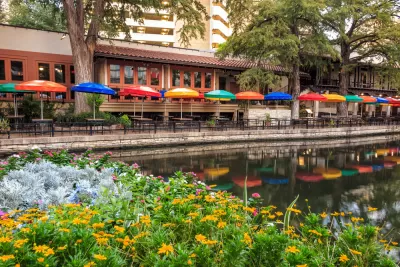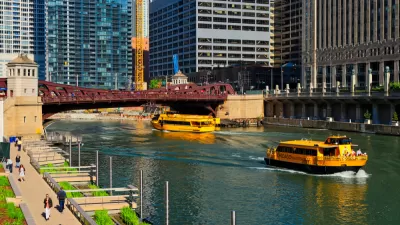A closer look at the data reveals a country that continues to sprawl.

Jed Kolko lays out his argument for a post a New York Times Upshot article:
Be skeptical when you hear about the return to glory of the American city — that idealized vision of rising skyscrapers and bustling, dense downtowns. Contrary to perception, the nation is continuing to become more suburban, and at an accelerating pace. The prevailing pattern is growing out, not up, although with notable exceptions.
According to Kolko's analysis, "[r]ural areas are lagging metropolitan areas in numerous measures, but within metro areas the suburbs are growing faster in both population and jobs."
Kolko presents a number of infographics to make an unavoidable point: most metropolitan areas in the country have become less urban (defined by density) during this decade. Exceptions include Seattle, Chicago, and Minneapolis at the top of the list of cities growing the most dense between 2010 and 2016. Meanwhile San Antonio, Austin, and Oklahoma City lead the trend toward less dense living. Kolko also locates a trend within the urbanization trend: already dense metros are getting denser. Thus, Kolko forgives those propagating the perception that the entire country is urbanizing: "metro areas that are urbanizing have more than their fair share of urban planners, including Seattle, Minneapolis, Washington and Boston. Those who write about, advocate for and choose to live in cities really do see more urbanization around them."
Kolko's argument echoes that of an earlier article by Alon Levy, which took San Diego County, in California, as its case study for the same suburbanization trend.
FULL STORY: Seattle Climbs but Austin Sprawls: The Myth of the Return to Cities

Planetizen Federal Action Tracker
A weekly monitor of how Trump’s orders and actions are impacting planners and planning in America.

The Simple Legislative Tool Transforming Vacant Downtowns
In California, Michigan and Georgia, an easy win is bringing dollars — and delight — back to city centers.

San Francisco's School District Spent $105M To Build Affordable Housing for Teachers — And That's Just the Beginning
SFUSD joins a growing list of school districts using their land holdings to address housing affordability challenges faced by their own employees.

In More Metros Than You’d Think, Suburbs are Now More Expensive Than the City
If you're moving to the burbs to save on square footage, data shows you should think again.

The States Losing Rural Delivery Rooms at an Alarming Pace
In some states, as few as 9% of rural hospitals still deliver babies. As a result, rising pre-term births, no adequate pre-term care and "harrowing" close calls are a growing reality.

The Small South Asian Republic Going all in on EVs
Thanks to one simple policy change less than five years ago, 65% of new cars in this Himalayan country are now electric.
Urban Design for Planners 1: Software Tools
This six-course series explores essential urban design concepts using open source software and equips planners with the tools they need to participate fully in the urban design process.
Planning for Universal Design
Learn the tools for implementing Universal Design in planning regulations.
Smith Gee Studio
City of Charlotte
City of Camden Redevelopment Agency
City of Astoria
Transportation Research & Education Center (TREC) at Portland State University
US High Speed Rail Association
City of Camden Redevelopment Agency
Municipality of Princeton (NJ)





























